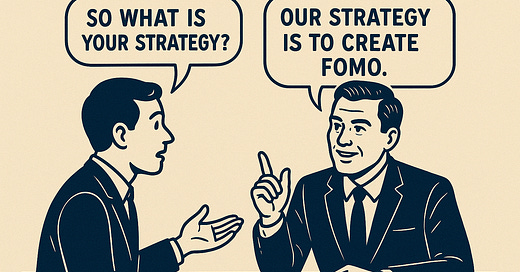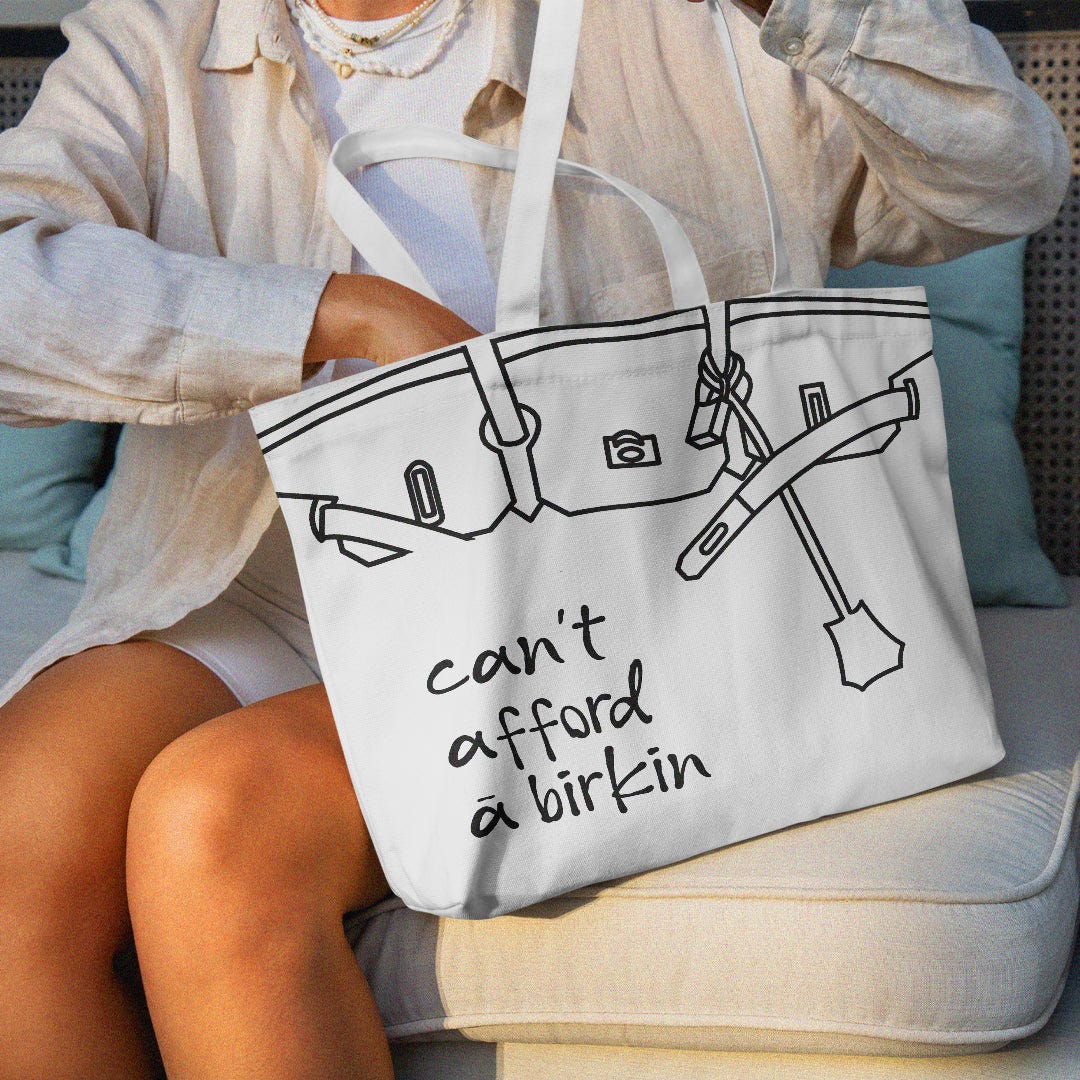We all want what we cannot get. Such is human nature. In comes “Scarcity” or “Exclusivity”.
I am not a very materialistic person myself but I have often wondered about the strategy of using exclusivity or scarcity as the core value driver. The customer value in this case is usually linked to an exclusive experience or a scarce product (even if the scarcity is artificial). Today we will dive deeper into what this strategy of exclusivity and scarcity is and where it works or does not work.
Why do we crave exclusivity?
Though there are many theories around this but I would like to highlight two that I find really interesting.
The Scarcity Principle
According to the scarcity principle, the price for a scarce good should rise until an equilibrium is reached between supply and demand. This is based on human psychology that we want more of what we cannot have or is difficult to get. Let us use a tech example here. Initially when Gmail was launched it was an invite only. I remember I was in college and it was such a rage. We all had hotmail or yahoo email ids but Gmail just sounded so much cooler. It had more storage, the interface looked neat and it was new. Everyone wanted to get invited to use it and those who got in could invite others. You really figured who your true friends were based on if they chose you to get the one invite they had to share. Would we have been equally hyped had it not been for this limited or invite only accesss? I think not!
Social Proof or FOMO
Social proof is a psychological phenomenon wherein people validate their actions by copying others. While scarcity or exclusivity starts the initial drive of people wanting something, social proof extends it to others. Even those who are less interested or mildly interested might start copying the ones genuinely interested and drive up the demand even more. Here I wanted to use the example of Taylor Swift - Open Eras tour. My wife and I are not really Taylor Swift fans. We have heard her music and appreciate it but not in a manner we can call ourselves her fan, but when the tour was announced last year, we pre-registered for the tickets, sat in front of the computer for couple of hours to try our luck and all because there was a mad rush around us and we wanted to be a part of that rush too. In today’s day and age you can also call social proof, FOMO (Fear of missing out) - even when you did not want it in first place.
How have companies used exclusivity or scarcity as a strategy?
Companies have long been using exclusivity or scarcity as a tactic (to drive initial brand awareness and excitement) or as a true strategy ( building strong brands). Let us discuss a few examples where it is used as a strategy vs a tactic.
Using Exclusivity or Scarcity to build a brand (True Strategy)
This strategy is usually employed in the luxury or experience industry and two very famous examples come to mind.
The Birkin Bag
You cannot just walk into a Hermes showroom and buy a Birkin Bag. No one really knows how you get to buy one but basically you come in and buy a bunch of stuff with a particular sales associate, who once you have met your quota (and this would be over multiple visits and purchases) will finally let you buy a Birkin Bag. Otherwise, you will hear it is not available or out of stock. This is more of what I like to call “manufactured scarcity.”. On the pull of this Birkin Bag, Hermes has built a brand that makes it even more desirable than other luxury brands. This along with some other aspects have created a sustainable competitive advantage for Hermes in the luxury brand landscape.
Tomorrowland (Or other famous music festivals)
Tomorrowland is arguably the biggest electronic dance music festival in the world. Held in a small town in Belgium, its tickets are elusive. Pre-registration, long online waits, sheer luck are all part and parcel of getting these tickets. While Tomorrowland has now used its brand to organize other festivals such as one in Brazil and a Winter Festival - the pull of the original Tomorrowland remains the same. Every DJ wants to play there and every raver wants to rave there. While the festival has become bigger, the limited tickets have helped it build a strong brand which remains as desirable as ever.
Now one thing to note here is, exclusivity or scarcity by itself cannot be a strategy. It has to be backed by strong customer value. Both in the case of Hermes and Tomorrowland, the underlying product or experience by itself has superior customer value. It is just that it is further elevated by the scarcity principle. A good example of this failing is the FYRE festival. While they were able to build a buzz by being the exclusive festival happening on a so-called private island, the core product by itself turned out to be a huge disappointment.
Another important thing to note is that the strategy only works till the experience or product is desirable in a way that it brings along with it a status symbol. If that is replaced or threatened the strategy can fail very quickly. Here I quote the example of De Beers’. De Beers’ had a near monopoly on diamonds and kept the prices high by creating artificial scarcity. This coupled with brilliant marketing around diamond wedding rings helped it generate a lot of value. Enter lab-grown diamonds. Almost impossible to differentiate by human eye and even regular tests, these diamonds are now flooding the market. The status symbol a diamond would bring to a person is now under threat. This has created an existential crisis for the “real” diamond industry.
Using Exclusivity or Scarcity to drive initial excitement (Tactic)
In case you don’t have true long term scarcity or exclusivity but are more of a mass market product, you can still use exclusivity or scarcity but in this case it is more of a marketing tactic than true strategy, as the impact in shortlasting and if attempted for too long can have negative influence of brand.
Limited access or early access is a tactic employed by many products. From Gmail to Uber a lot of brands have used this tactic.
One famous example that comes to my mind is Oneplus. I remember when OnePlus launched initially you had to get signed up on a waitlist or be invited by a friend who had bought a phone to be able to buy one. It created a strong buzz, similar to the Gmail example quoted earlier. Obviously it is critical to understand when to open the floodgates and let everyone have access, as keeping this tactic up for too long can lead to customer irritation and negative perception of the brand.
While Google has a strong example of making this work for Gmail, the same failed massively when it came to Google+. Not only was the rollout too slow leading to the buzz dying out in the early stages itself but the underlying product itself was not great.
So what is our takeaway
No matter how you use exclusivity or scarcity - whether as a true strategy or tactic, the underlying product or service needs to create superior customer value for any of them to work.
If you are a mass market product, then you can use it only as a tactic which can appear in various forms such as early access, invite only, limited edition etc. The idea here is to create initial hype around the brand or to bring back the hype periodically by introducing new limited elements.
If you are a luxury or exclusive product or experience, this can be used as a true strategy as shown by Hermes or Tomorrowland, irrespective of whether the scarcity is manufactured or real.
The strategy works as long as the experience cannot be replaced by an alternative in an equally satisfying way on the back of the alternative being cheaper, accessible to masses and difficult to differentiate from the real one.
That’s it for this week. I hope you enjoyed reading this. Please share if you liked it and subscribe to get notified every week when I release the newsletter. See you next time.







